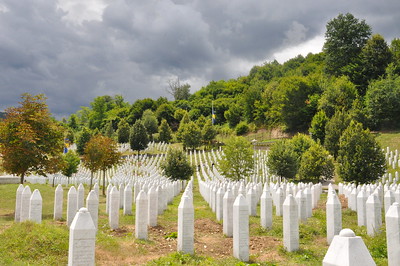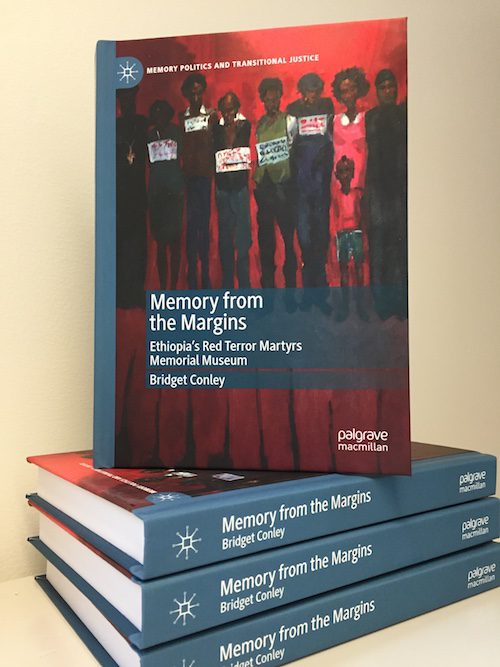Several of the key transitional justice mechanisms that were formed into an international template for peacebuilding in the decades following the end of the Cold War had truth-telling at their core: prosecutions, truth and reconciliation commissions, and memorial museums. These, along with other policy measures, were touted as the tools for transforming formerly conflict-ridden or authoritarian states to liberal democracies. The uneven outcomes in countries where the tools were implemented have generated criticism that ranges from reform to rejection of the entire endeavor. Coupled with the sideswipe of internationally rising nationalism and renewed embrace of militarism, the peacebuilding and justice paradigm is today at risk.
One might wonder, looking back over the past few decades, how we should assess the work of truth-telling about individual harms in fractured societies. Does it unleash new rounds of hatred or self-serving tribalism? Does it form the grounds for common narratives, equality and justice? The story obviously varies from place to place. Perhaps one of the overarching challenges of drawing larger conclusions is that neither rejection nor embrace actually conveys the intricate difficulties of living in the wake of violence. This task belongs to the chroniclers of everyday life and the observers of intimacy.
Thus, one of the more complex meditations on memory and forgetting after war, comes not from social science, international law or erudite essay, but from this year’s winner of the 2017 Nobel Prize for literature, Kazuo Ishiguro, in his 2015 novel, The Buried Giant (2015). Set in an era following King Arthur’s demise, the characters inhabit a land beset by the fog of forgetting. The novel posits several ways to imagine the purpose of memory from the perspective of how its absence afflicts the story’s core characters.
At the heart of the book are Axl and Beatrice, an elderly married couple who spend the entire novel skirting death and the penetration of sharp memories that they cannot piece together into a coherent picture. Before setting off on a journey, Beatrice, the gentle woman of conviction who is the conscience of the story, worries that their inability to remember will hamper their desire to die peacefully together. She questions, “…I wonder if what we feel in our hearts today isn’t like these raindrops still falling on us from the soaked leaves above, even though the sky itself long stopped raining. I’m wondering if without our memories, there’s nothing for it but for our love to fade and die” (45). Social forgetting, Ishiguro’s novel suggests, is intertwined with personal memory. If the larger community cannot recall its past, the lapses seep into and diminish the ability for individuals to make sense of their lives, even their loves.
The winding path of Ishiguro’s storytelling poses a question of how to locate the original demise of truth-telling. Was it the willful turning away from a promise of peace, as King Arthur’s Britons betrayed an agreement and slaughtered thousands of Saxons? Axl, as is slowly revealed over the course of the narrative, was the one who had negotiated a great peace between Britons and Saxons. The Britons broke the peace and waged battles against unarmed villagers. In the wake of a great ‘victory’, Axl explains his sorrow: “Sir, these are the very villages I befriended in Arthur’s name. In one village they called me the Knight of Peace and today I watched a mere dozen of our men ride through it with no hint of mercy, the only ones to oppose them boys not yet grown to our shoulders” (213). The time still hazy in Axl’s mind, he does not wish to recall the brutality that befell the land once his peace was shattered, he, at this late moment in life, wants only to resurface his memories of love with his wife—in hopes of personal solace before he dies.
Or, is the fault of memory to be located in forgetting the violence itself? A mysterious Saxon warrior, Wistan, commits to ending the mist that covers Saxons’ ability to remember the violence perpetrated against them by Arthur’s Knights. For him, the betrayal is not the violence itself, but inability of Saxons to make use of that memory in service of a new campaign of vengeance. The history of collective abuses is useful to interrupt and override personal experiences of kindness between individuals across lines. Memory obscures intimacy. Encouraging his young protégé, Wistan instructs that never should personal experience serve to soften hatred between former enemies: “There are those Britons who tempt our respect, even our love, I know this only too well…promise me this. Should I fall before I pass to you my skills, promise me you’ll tend well this hatred in your heart. And should it ever flicker or threaten to die, shield it with care till the flame takes hold again” (242).
Despite the centrality of inter-group violence and suspicion to the novel’s plot, the story progresses only through the flickering of relations between individuals that do not conform to social division. This is where the structure of storytelling clashes with a theoretical presentation, even one conveyed through the interests and words of individual characters. At key points, the story only unfolds through happenstance and decisions that counter the pull of tribal thought: a desire to rescue a child, to aid fellow travelers, or a glimmer of a larger ethical law. For instance, at a crucial moment, the Knight Gawain, tasked with maintaining the mist of forgetting, acts against his duty, because he can no longer abide by the decisions of one of his ‘own’: “was I a fool to rescue that boy? Yet the abbot appals me so, and I know God will thank me for what I did” (260). Ishiguro’s reliance on such quirks in his narratives have been criticized as clumsy authorial devices that are contrary to the internal logic of the novel. I disagree: the story’s very dependence on individual choices signals an understanding that the intricacies of memory, personal relations and violence never quite align with master narratives.
Nonetheless, the novel grants rhetorical emphasis to an understanding of memory, as David Rieff has likewise argued, as “determination to exact revenge rather than commit to the hard work of forgiveness” (Rieff, 39). This is where the “buried giant” of the book’s title emerges:
“The giant, once well buried, now stirs. When soon he rises, as surely he will, the friendly bonds between us will prove as knows young girls make with the stems of small flowers. Men will burn their neighbors’ houses by night. Hang children from trees at dawn. The rivers will stink with corpses bloated from their days of voyaging. And even as they move on, our armies will grow larger, swollen by anger and thirst for vengeance” (297).
The final word on whether the return of memory ushers in new cycles of violence, or if the passing years will have produced a different generation, is unclear. But the path of personal recollection, now unleashed from the collective forgetting, offers a crisp, troubling lesson. Ishiguro refuses to allow comfort in the clichés of how the truth will set one free. In his story, the truth imposes a bitter reality: forgiveness is possible, but the work of living with memory is another task altogether.
In the final scene, Axl explains to a boatman, who would ferry the elderly couple to an island just beyond, how his love for his wife slowly allowed him to forgive a misdeed committed years previously: “A wound that healed slowly, but heal it did. For there was a morning not long ago, the dawn brought with it the first signs of this spring, and I watched my wife still asleep though the sun already lit our chamber. And I knew the darkness had left me” (313). But Axl’s story differs just enough from Beatrice’s version, so that their love is not sufficiently proven. The boatman reveals that he cannot ferry Axl and Beatrice together, as they had hoped. The story ends with Axl’s mournful farewell to his wife—a conclusion without redemption.
In the end, the story of Beatrice and Axl suggests that personal recollection—and the possibility of meaning, is tied to historical memory. The two are not the same, but like a road that follows a river, they run alongside, crossing, departing at times, but returning to the same valley. Thus, they are linked, but do not provide a “cure” one for the other. That they are related, but not identical, means that they can interrupt each other. They thus serve as a source of tension each for the other that retains the possibility–but no assurance—of a different future. Ultimately, Ishiguro’s story argues that both personal and collective truth-telling is the only possibility forward, nothing else is sustainable. But the truth does not promise a happy ending; it charts a harder path, where one simply must live with the consequences. Anything else, the novel suggests, is artifice.
Notes
Ishiguro, Kazuo. 2015. The Buried Giant. New York: Vintage Books.
Rieff, David. 2016. In Praise of Forgetting: Historical Memory and Its Ironies. New Haven: Yale University Press.
Wood, James. 2015. “The Uses of Oblivion.” The New Yorker, March 23.


